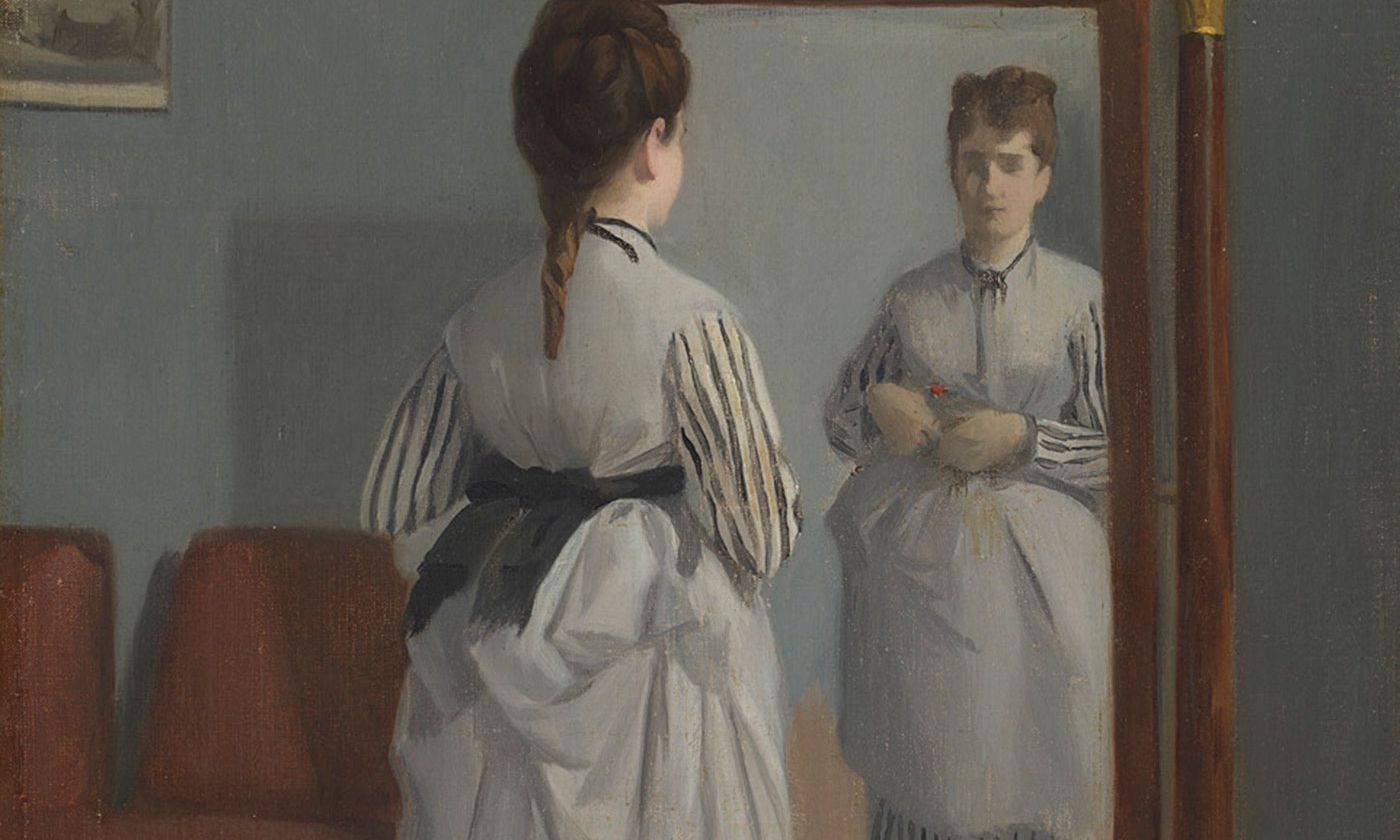Eva Gonzalès, La Psyché (The Full-length Mirror), about 1869-70.
Image: © The National Gallery, London
The National Gallery in London has acquired its first painting by Eva Gonzalès, an upper-class French Impressionist painter who was tutored by Édouard Manet but whose work fell out of favour after her untimely death following childbirth in 1883. Gonzalès is the 20th woman to now be represented in the museum’s collection, which includes around 750 artists spanning the mid-13th century to 1900.
“She is one of a number of women artists whose reputation did not last much beyond their life, because all of the emphasis was on these heroic men moving things forward,” says Christopher Riopelle, the Neil Westreich curator of post-1800 paintings at the National Gallery.
The institution has purchased the work, La Psyché (The Full-length Mirror) (around 1869-70), of a subdued scene of a woman looking in the mirror, for a tax-advantageous price of £1.5m. It is only the second work by Gonzalès to enter a UK public collection. The other, The Donkey Ride (around 1880-82), is housed at the Bristol Museum and Art Gallery.
Born in 1849 and raised in a cultured, bourgeois home, Gonzalès began taking art lessons with the portraitist Charles Chaplin when she was 16. Three years later she met Manet and became his model and later student, exhibiting at the Paris Salon for the first time in 1870, around the same time that she painted La Psyché and the same year that Manet painted two portraits of her.
By the time of her death 13 years later, aged 34, she had become an established artist in her own right. “She dies within a few weeks of Manet, so her fame has been very much associated with him, more than it needed to be,” Riopelle says.
Contrary to reports which say Gonzalès was criticised for adopting overt similarities to Manet’s style, the curator points out how the younger artist in fact influenced her teacher, particularly in his use of pastels. “We’re beginning to realise as pictures emerge that she was a tremendously interesting person because, almost from the beginning, by the time she gets to Manet’s studio, she is a distinct artistic personality,” Riopelle says. “Manet realises that she’s not just this bland student obeying every word.”
La Psyché is being sold from an anonymous British collection. “The family bought the painting in London in 1952 for what must have been around £200,” Riopelle says. “It’s been sitting there completely unseen—much loved—but completely unseen for 70 years.” The work has been acquired thanks to three legacy gifts from Martha Doris Bailey, Gillian Cleaver and Sheila Mary Holmes. More than a quarter of the National Gallery’s paintings have been acquired as a result of gifts left in wills.
So does the National Gallery plan to acquire more works by women? “We are obviously very concerned. And when something like this comes up, it’s a no brainer,” Riopelle says. “Any artist coming into the National Gallery faces very tough competition. And they have to stand up. Certainly Artemisia [Gentileschi] stands up—and Eva Gonzalès, with this extraordinarily subtle picture of a female world, in the privacy of the old bourgeois Paris apartment, certainly does that as well in a very interesting way.”
"La Psyché": London's National Gallery acquires its first painting by the Impressionist Eva Gonzalès

